Chamaesyce revoluta, Threadstem Sandmat
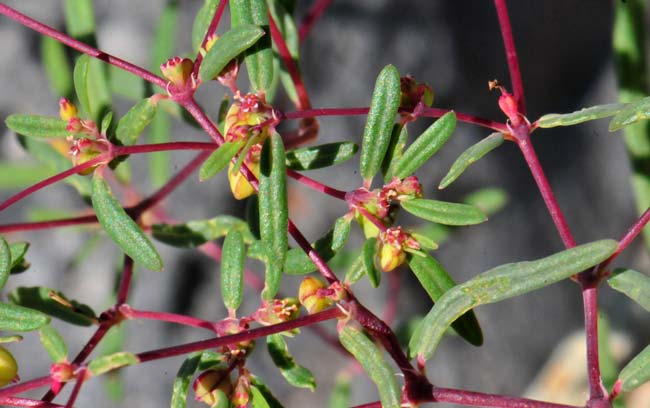
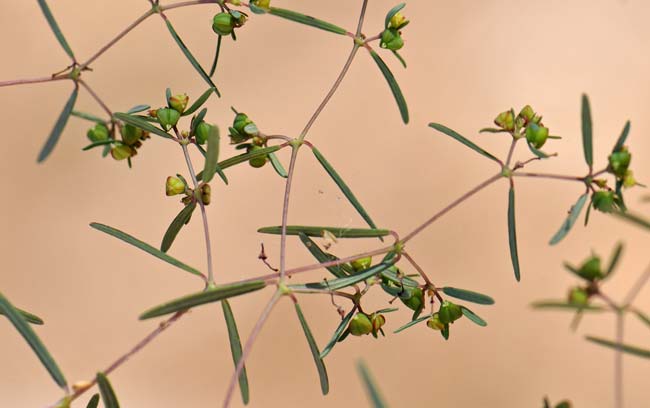
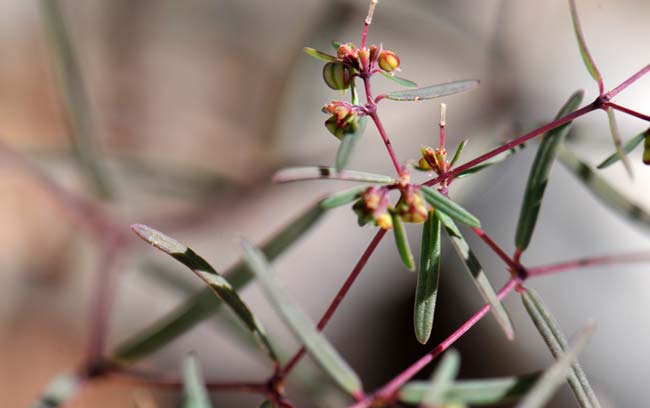
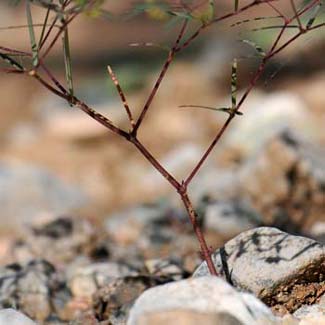
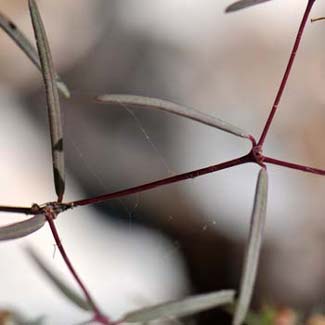
Scientific Name: Chamaesyce revoluta
Common Name: Threadstem Sandmat
Also Called: Rolled Leaf Spurge, Threadstem Spurge, Thread-stem Broomspurge, Thread-stem Sandmat
Family: Euphorbiaceae, Spurge or Euphorbia Family
Synonyms: (Euphorbia revoluta)
Status: Native.
Duration: Annual
Size: Up to 8 inches more or less.
Growth Form: Forb/herb; erect, slender stems, usually glabrous.
Leaves: Green; leaves simple, about an inch long, paired, narrowly linear, glabrous, margins entire and revolute.
Flower Color: White; tiny petaloid appendages, appendages wider than gland, inflorescence resembles a "flower", "flower" is a cyathium, involucre obconic glabrous, monecious, 5 to 10 staminate flowers surrounding 1 pistillate flower, fruit a glabrous capsule.
Flowering Season: August to October.
Elevation: 3,000 to 6,000 feet.
Habitat Preferences: Dry rocky hillsides and rocky slopes.
Recorded Range: Threadstem Sandmat is found in the southwest United States in the states of; Arizona, California, Colorado, Nevada, New Mexico, Texas and Utah. It is also native to Baja California and northern Mexico. In Arizona it is scattered from the northwest, north-central, central and southern parts of the state. It could be said that this species is scattered about throughout its natural distribution. Threadstem Sandmat is uncommon but secure in California.
North America & US County Distribution Map for Chamaesyce revoluta.
U.S. Weed Information: No information available.
Invasive/Noxious Weed Information: No information available.
Wetland Indicator: No information available.
Threatened/Endangered Information: Threadstem Sandmat is uncommon but secure in California.
Genus Information: Over 90 species in Chamaesyce in the United States, Canada and Mexico. World-wide over 440 species. Approximately 39 species in Arizona, statewide. Note: Taxonomists appear to be moving toward reclassification of Chamaesyce to Euphorbia, its former classification.
Comments: Threadstem Sandmat is not a common plant in Arizona, typically scattered about, but always a delight to come upon.
In Southwest Desert Flora also see: Chiricahua Mountain Sandmat, Chamaesyce florida, Whitemargin Sandmat, Chamaesyce albomarginata; Arizona Sandmat, Chamaesyce arizonica; Head Sandmat, Chamaesyce capitellata; Royal Sandmat, Chamaesyce dioica; Hyssopleaf Sandmat, Chamaesyce hyssopifolia; Red-gland Sandmat, Chamaesyce melanadenia; Carrizo Mountain Sandmat, Chamaesyce pediculifera; and Yuma Sandmat, Chamaesyce setiloba.
Parts of Threadstem Sandmat have been used by the Navajo as a lotion for chafing and sores. See ethno-botanical uses at Native American Ethnobotany, University of Michigan, Dearborn.

